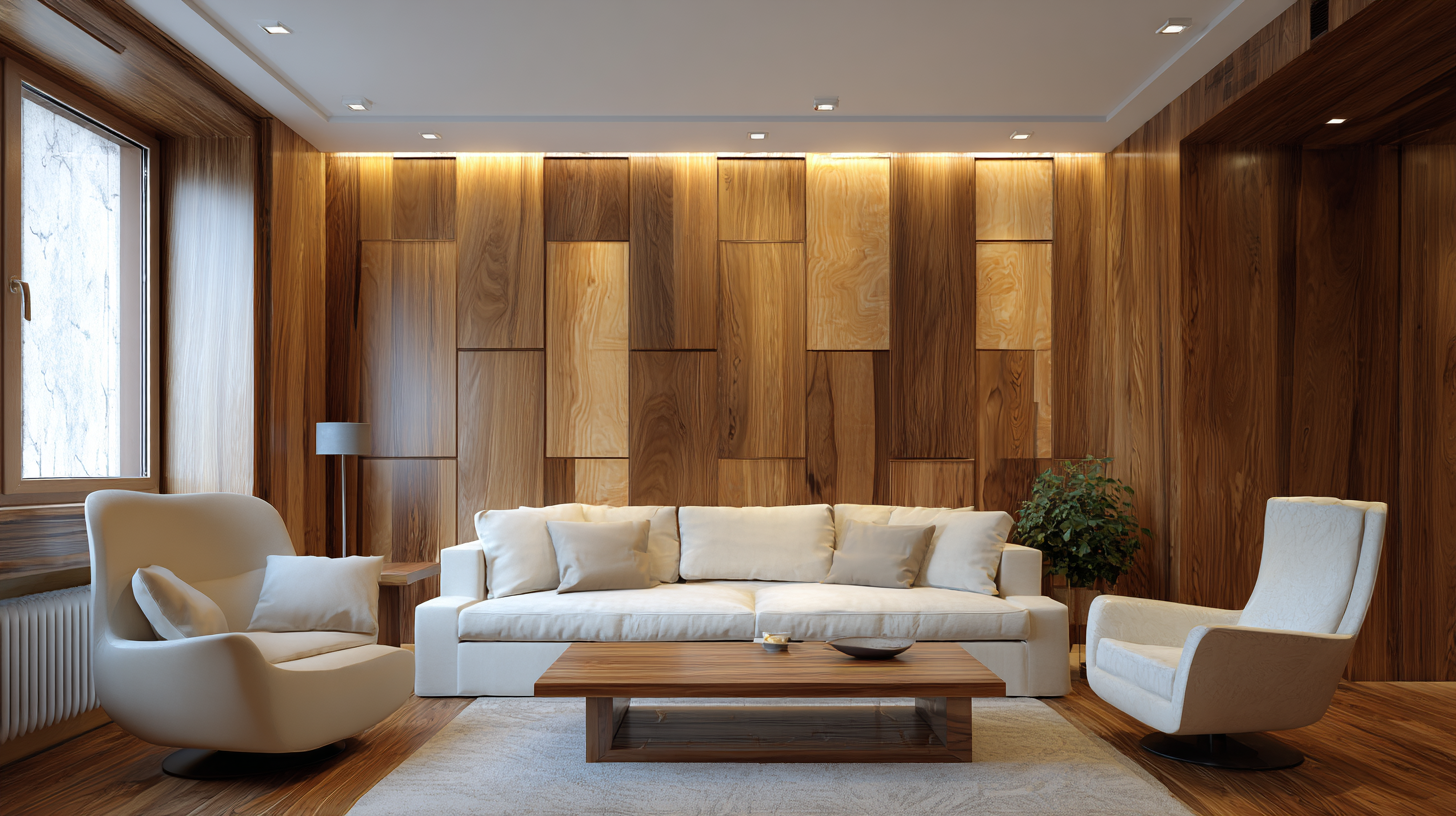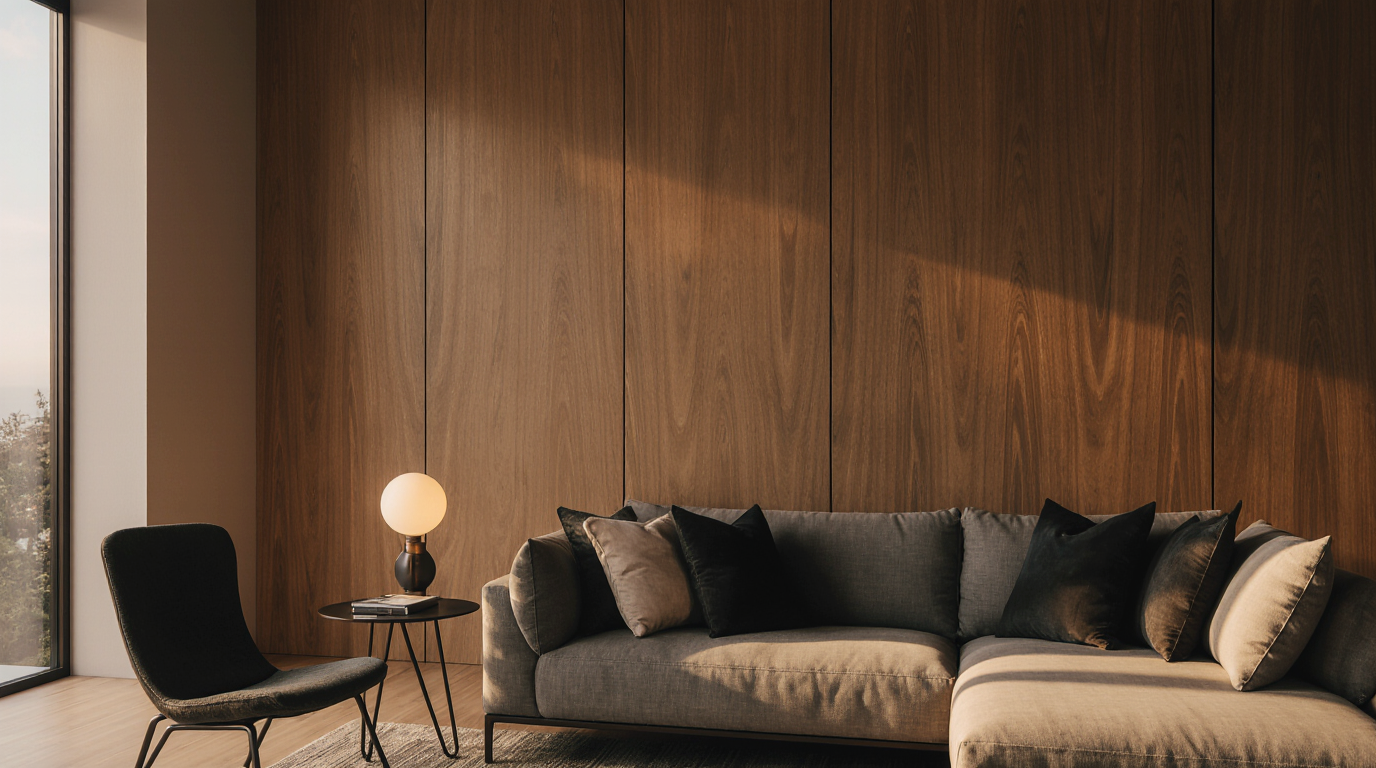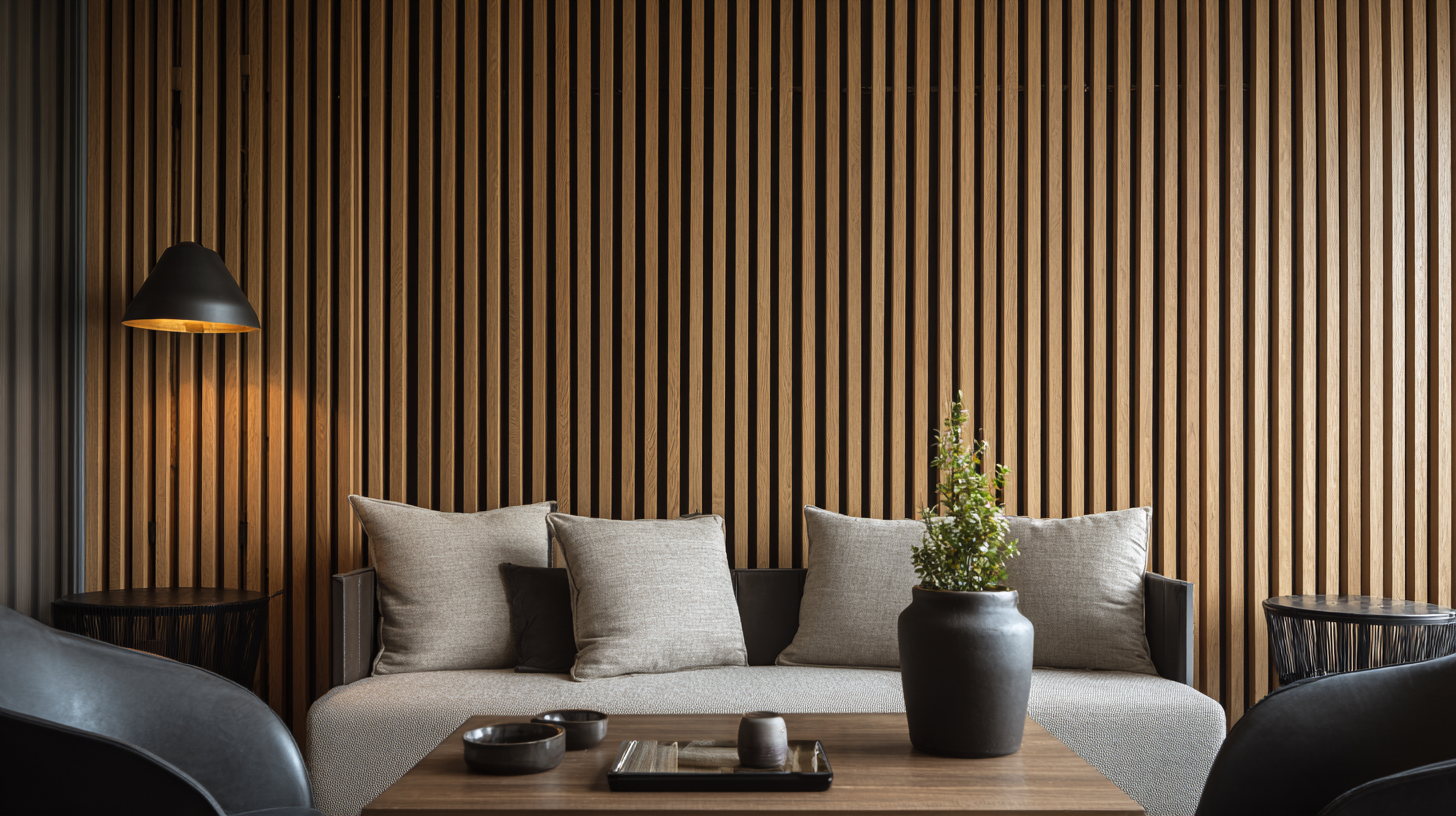
Wood paneling has been part of interior design for centuries, adding warmth, texture, and personality to spaces of every style. At its core, wood paneling is a decorative wall covering made from real wood or wood-based materials, often arranged in panels or planks. It`s more than just a design choice - it`s a way to bring depth, structure, and natural charm into a room.
Originally, wood paneling was used for practical reasons. In old European homes, wooden panels were installed to insulate stone walls and make rooms more comfortable. Over time, it evolved from purely functional to highly decorative. Today, homeowners, designers, and architects use it to add visual interest, acoustic balance, and a sense of craftsmanship that paint and drywall can`t replicate.
At Sound Pro Solutions, we work with every type of wall surface - from plain drywall to textured plaster and decorative paneling. We often see clients using wood paneling not only for aesthetics but also as part of larger acoustic projects. It`s a timeless material that looks great, but it also plays a role in how a space sounds and feels.
What Does Paneling Mean?
In its simplest form, paneling means covering a wall with panels or sheets made from a chosen material. That material could be wood, MDF, plastic, or even fabric. The goal is to create a decorative or functional layer over the structural wall.
When people ask, "what does paneling mean?", we explain that it`s both a design technique and a construction method. Wood paneling, specifically, refers to wall cladding made of real wood or engineered wood. It comes in many forms, from sleek modern slats to traditional patterns that remind you of historic homes.
There are several names for different types of wood paneling, and understanding them helps you visualize what might work best in your space:
- Wainscoting covers the lower part of a wall, adding structure and visual balance.
- Board and batten combines vertical boards with narrow battens to hide seams and create rhythm.
- Shiplap features horizontal planks with overlapping edges, giving a clean, coastal look.
- Beadboard offers narrow, grooved panels that bring texture and a cottage-style feel.
Modern wood paneling isn`t limited to rustic or vintage interiors. New materials and finishes have brought it into contemporary design - smooth walnut slats, matte oak veneers, and acoustic versions are now popular in offices, restaurants, and modern homes alike.
Different Types of Wood Paneling

When clients come to us asking, "what is wood paneling called?", they`re often surprised by how many variations exist. Each type serves a slightly different purpose - aesthetic, structural, or even acoustic.
Solid Wood Planks
This is the most traditional form of paneling, made from real wood boards such as oak, pine, or cedar. These planks often use a tongue-and-groove or shiplap joint system to lock together tightly. The result is a seamless, natural look that feels authentic and warm. Solid wood has character - every board has unique grain patterns, knots, and color tones.
Plywood Panels
Plywood became popular in mid-century design for its affordability and flexibility. It`s easier to install than solid wood and can be finished with stains, paints, or veneers. Many older homes with vintage walls feature this kind of paneling - lightweight yet visually rich.
MDF with Wood Veneer
Medium-density fiberboard (MDF) with a thin layer of real wood veneer gives you the look of solid wood at a lower cost. It`s smooth, easy to paint or stain, and often used in modern spaces that need clean lines and consistent finishes.
Decorative Slat Panels
These are among the most popular options today. Thin vertical or horizontal wood slats mounted on backing panels create a contemporary, high-end look. They`re used in homes, offices, and commercial interiors to add rhythm and visual movement.
Acoustic Wood Panels
Here`s where our expertise at Sound Pro Solutions really shows. Acoustic wood paneling brings together the natural beauty of wood and the practical benefits of sound control. These panels feature subtle perforations or narrow spacing that let sound waves travel through the surface and into the acoustic material behind it. This design helps reduce echo, improve speech clarity, and create a calmer, more balanced sound environment - all while maintaining the warmth and elegance of real wood.
To put it simply, solid wood planks offer a natural, durable, but higher-cost option. Plywood panels deliver a more affordable, classic appearance, while MDF veneer provides a smooth, modern surface that`s easy to install. Slatted and acoustic panels, on the other hand, blend visual appeal with acoustic performance, making them one of the most functional and stylish choices. Each type finds its place depending on what matters most - beauty, budget, or performance.
What Is Behind Wood Paneling?
A question we hear often is "what is behind wood paneling?" - and it`s a good one. Understanding what`s underneath helps you plan for both renovations and acoustic upgrades.
Most walls behind wood paneling consist of drywall or plaster, which acts as the main wall surface. In some cases, you`ll find furring strips - narrow wooden battens used to create space between the wall and the panels. This air gap allows for airflow and easier installation while also preventing moisture buildup.
In modern installations, furring strips can also help align panels evenly across imperfect walls. But that same gap can amplify certain sound reflections, which is why acoustic treatment matters if you`re aiming for quieter interiors.
For homes built before the 1980s, it`s not uncommon to find older drywall, insulation, or even hidden damage behind paneling. During renovation, removing panels can reveal issues like moisture stains, cracked plaster, or outdated wiring.
At Sound Pro Solutions, we often inspect these layers when customers plan acoustic upgrades. Knowing what`s behind your walls helps us recommend the right soundproofing approach - sometimes it`s as simple as adding insulation or acoustic barriers before reinstalling the panels.
Wood Paneling and Acoustics

Wood is a fascinating material when it comes to sound. It`s both reflective and diffusive, depending on how it`s used. A flat wood wall will bounce sound waves, while textured or slatted wood surfaces can scatter and soften them.
When clients ask how wood affects acoustics, we explain that wood paneling can help or hurt your sound quality, depending on the design. Hard, flat surfaces reflect sound energy, which can increase echo and reverberation. That`s why older rooms with full wood walls often sound lively - sometimes too lively.
However, when designed correctly, wood paneling can enhance sound by diffusing reflections and creating a balanced acoustic environment. This is why modern studios, offices, and restaurants often use acoustic wood panels - they bring both style and performance.
Our line of acoustic wood panel systems at Sound Pro Solutions is engineered for that balance. They reduce unwanted reflections while keeping the natural beauty of real wood. Whether you`re designing a home theater or an upscale office, the right panels can improve both the sound and the aesthetics of your space.
Installing or Removing Wood Paneling
Installing wood paneling isn`t as complicated as it looks, but it does require some planning. The key is to know what`s already on your walls and what kind of result you want.
For new installations, you usually start with a flat surface like drywall or plaster. If the wall is uneven, furring strips can help create a level base for mounting. Panels can be nailed, screwed, or mounted using cleats or brackets. We often see clients choosing decorative or acoustic wood paneling for offices, studios, or even open-plan homes - it adds warmth without losing a modern look.
If you`re renovating an older space and removing existing wood paneling, expect a bit of surprise behind the surface. You might find old plaster, insulation, or wiring that needs attention. Sometimes, you`ll even find air gaps or moisture spots. Taking care of these before reinstalling panels can make a big difference in both appearance and acoustic performance.
When combining wood paneling with acoustic treatment, placement matters. Panels can act as reflective surfaces, so we often recommend pairing them with absorptive materials in strategic areas. This balance gives you both visual texture and great sound.
For clients working on home studios or offices, we sometimes integrate soundproofing layers behind decorative paneling. Products like mass-loaded vinyl or mineral wool can sit behind the wood, reducing sound transmission while keeping the aesthetic intact. It`s a small step that makes a big acoustic difference.
The best part? You don`t have to choose between looks and function. Modern acoustic wood panels combine both - they`re easy to install, perform exceptionally well, and look like something out of an interior design magazine.
Expert Insights

Wood paneling has come a long way - from the rustic charm of mid-century homes to sleek acoustic walls in contemporary spaces. It`s still one of the most versatile ways to transform a room, giving warmth, texture, and acoustic control in one elegant package.
At Sound Pro Solutions, we see it as more than decoration. It`s a tool for shaping how your space sounds and feels. Our catalog includes a range of acoustic wood panels and installation materials that blend seamlessly with any design style. Whether you`re upgrading a small office or designing a full recording studio, we can help you find the right solution.
We don`t just sell materials - we help you make sense of them. Every wall, every space, and every sound challenge is unique. That`s why our team is here to guide you, from material selection to installation support.
If you`re ready to upgrade your walls with modern wood paneling that looks beautiful and performs beautifully, explore our products at soundprosolutions.com. Quiet, comfort, and design - that`s what real craftsmanship sounds like.
Recent posts




